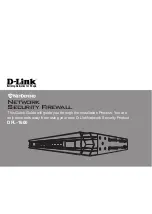
ASUS WLAN Card
65
Chapter 5
Chapter 5 - Glossary
Glossary
IEEE 802.11b (11Mbits/sec)
In 1997, the Institute of Electrical and Electronics Engineers (IEEE) adopted
the 802.11 standard for wireless devices operating in the 2.4 GHz frequency
band. This standard includes provisions for three radio technologies: direct
sequence spread spectrum, frequency hopping spread spectrum, and infrared.
Devices that comply with the 802.11 standard operate at a data rate of either 1
or 2 Mbps.
In 1999, the IEEE created the 802.11b standard. 802.11b is essentially identical
to the 802.11 standard except 802.11b provides for data rates of up to 11 Mbps
for direct sequence spread spectrum devices. Under 802.11b, direct sequence
devices can operate at 11 Mbps, 5.5 Mbps, 2 Mbps, or 1 Mbps. This provides
interoperability with existing 802.11 direct sequence devices that operate only
at 2 Mbps.
Direct sequence spread spectrum devices spread a radio signal over a range of
frequencies. The IEEE 802.11b specification allocates the 2.4 GHz frequency
band into 14 overlapping operating Channels. Each Channel corresponds to a
different set of frequencies. See the Appendix to determine the center frequency
used by each Channel.
If operating multiple 802.11b Wireless ASUS WLAN Cards in the same vicinity,
the distance between the center frequencies must be at least 25 MHz to avoid
interference.
In the United States, the 802.11b standard allocates 11 operating
Channels for direct sequence devices. Channels 1, 6, and 11 are standard allocates
11 operating Channels for direct sequence devices. Channels
independent and
do not overlap with each other. To avoid
interference between 802.11b
Wireless ASUS
WLAN Cards, It is recommended
that you configure the Wireless
ASUS WLAN
Cards using only Channels 1, 6,
and 11.
Summary of Contents for WL-120g V2A
Page 1: ......
Page 5: ...6 ASUS WLAN Card ...








































